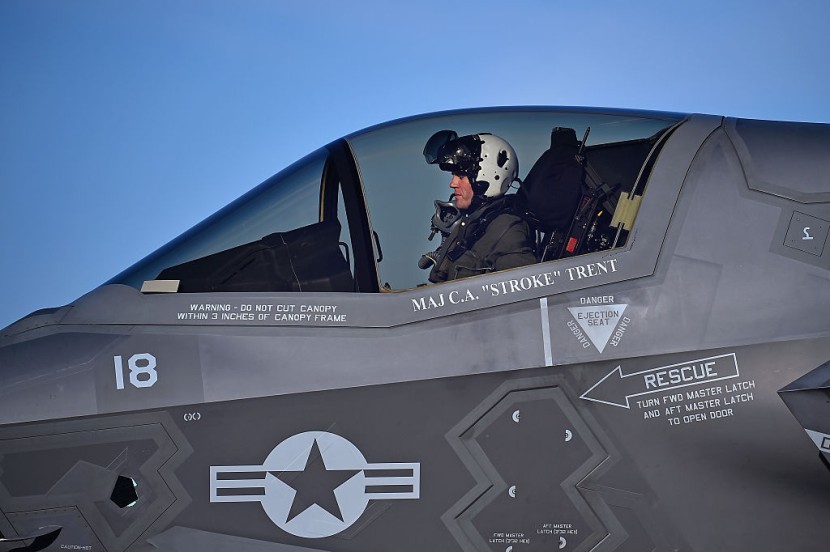
A study performed by the Pentagon uncovered high cancer rates among military pilots. In addition, it has been demonstrated for the first time that the ground workers who fuel, maintain, and launch these aircraft are also becoming ill.
The Pentagon released the analysis at the beginning of February. Retired military aviators have longed for the data. For years, the military aviators had expressed concern over the amount of air and ground crew members with cancer they knew.
Higher Cancer Rates in Military Pilots
They were informed that prior military research determined they were not at a higher risk than the US population. A one-year study of over 900,000 service personnel who flew on or worked on military aircraft between 1992 and 2017 revealed that aircrew members had an 87% higher prevalence of melanoma and a 39% higher rate of thyroid cancer.
Men had a 16% greater incidence of prostate cancer, whereas women had a 16% higher incidence of breast cancer. Aviation workers had a 24% higher prevalence of all forms of cancer.
According to the study, ground crews experienced a 19% higher prevalence of brain and nervous system malignancies, a 15% higher rate of thyroid cancer, and a 9% higher rate of kidney or renal cancers.
Similarly, according to the same study, women experienced a 7% greater incidence of breast cancer. The overall rate of all forms of cancer increased by 3%. James Seaman, a Navy A-6 Intruder pilot, was among those who died of cancer at age 61. His passing occurred in 2018. He is among a group of pilots who have been diagnosed with cancer.
His widow Betty Seaman is part of a big group of aviators and surviving wives who have fought Congress and the Pentagon for years to investigate the number of malignancies aviators and ground staff face.
Per Fox News, the Pentagon recognized that the study's flaws led to a probable undercount of cancer cases. The database of the military health system utilized for the study did not contain accurate cancer data until 1990; therefore, it may not have included pilots who flew planes of earlier generations.
Congress mandated the research in the military bill for 2021. Now that greater rates have been discovered, the Pentagon must conduct a more extensive investigation to determine why personnel fall ill.
Isolating potential causes is challenging, and the Pentagon was careful to note that this study "does not imply that military service in aircrew or ground crew occupations causes cancer" due to the multiple potential confounding factors that could not be controlled for in this analysis, such as family histories, smoking, and alcohol use.
However, aviation crews have long requested that the Pentagon examine the environmental factors to which they are exposed, such as jet fuels and solvents used to clean and maintain jet parts, sensors and their power sources in aircraft nose cones, and the massive radar systems on the decks of the ships on which they land.
The study found that when crew members were diagnosed with cancer, they were more likely to survive than members of the general population, CBS News reported. The study hypothesized that this was because they were diagnosed earlier due to required medical checkups and were more likely to be in better health due to military fitness requirements.
The Pentagon recognized that the study's flaws led to a probable undercount of cancer cases. The database of the military health system utilized in the study did not contain accurate cancer data until 1990. Therefore it may not have included pilots who flew planes of earlier generations.
In addition, the research did not include cancer data from the Department of Veterans Affairs or state cancer registries, meaning it did not cover cases of former crew members who became ill after leaving the military medical system.
Hazardous Chemicals Linked to Aviation Operations
According to the report, the Military will gather data from these registries to contribute to the overall count. In the second part of the investigation, causes will be isolated. The bill of 2021 mandates that the Department of Defense not only identify "the carcinogenic toxicants or hazardous chemicals linked with military flying operations" but also specify the kind of aircraft and areas where crews with cancer served.
Now that greater rates have been discovered, the Pentagon must conduct a more extensive investigation to determine why personnel fall ill. The Pentagon carefully noted that the study "does not imply that military service in aircrew or ground crew occupations causes cancer, as there are multiple potential confounding factors that could not be controlled for in this analysis," such as family histories, smoking, and alcohol consumption.
However, aviation crews have long requested that the Pentagon examine the environmental factors to which they are exposed, such as jet fuels and solvents used to clean and maintain jet parts, sensors and their power sources in aircraft nose cones, and the massive radar systems on the decks of the ships on which they land.
Captain Jim Seaman's gear reeked of jet fuel when he returned from a deployment on an aircraft carrier, according to his wife, Betty Seaman. Per ABC.net, the study found that crew members were more likely to survive when they were diagnosed with cancer than members of the general population. The study hypothesized that this was because they were diagnosed earlier due to mandatory medical checkups and were more likely to be in better health due to military fitness requirements.
Related Article : Turkey's 5th Gen TF-X Fighter Succeeds on Taxi Testing on Runway
@YouTube
© 2026 HNGN, All rights reserved. Do not reproduce without permission.







